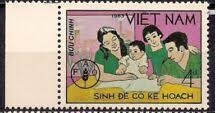George Washington Goethals was an American civil engineer and army officer best known for his role in the construction of the Panama Canal. He was born on 29 June 1858, in Brooklyn, New York, and died on 21 January 1928.
Goethals began his career as a civil engineer, working on various projects in the United States, including the construction of the Muscle Shoals Canal in Alabama and the locks and dams on the Ohio River. His exceptional abilities as an engineer and his dedication to his work earned him a reputation for excellence.
In 1907, Goethals was appointed as the chief engineer of the Panama Canal project, which was a significant undertaking aimed at constructing a waterway connecting the Atlantic and Pacific Oceans through the Isthmus of Panama. Under his leadership, the project faced numerous challenges, including difficult terrain, disease outbreaks, and logistical issues.
Despite the obstacles, Goethals successfully oversaw the construction of the Panama Canal, which was completed in 1914. His meticulous planning, organizational skills, and emphasis on sanitation and public health measures helped ensure the project's success. The Panama Canal revolutionized global trade by providing a shortcut for maritime transportation between the Atlantic and Pacific Oceans.
For his exceptional leadership and engineering achievements, Goethals was appointed as the first Governor of the Panama Canal Zone, a position he held from 1914 to 1916. He continued to manage and oversee the operation and maintenance of the canal, ensuring its smooth functioning.
Following his work on the Panama Canal, Goethals served as the chairman of the U.S. Board of Engineers for Rivers and Harbors and contributed to various engineering projects in the United States.
George Washington Goethals' contributions to civil engineering,
particularly his role in the successful construction of the Panama
Canal, have had a lasting impact on global transportation and trade. His
engineering expertise and leadership skills remain highly respected,
and he is remembered as a visionary engineer who played a pivotal role
in the development of one of the world's most important waterways.








.jpg)
